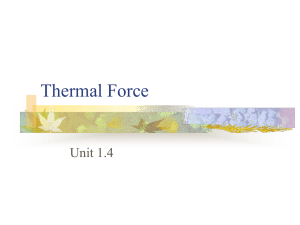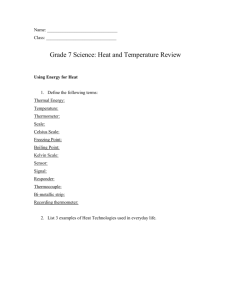Temperature, Thermal Energy, and Heat
advertisement
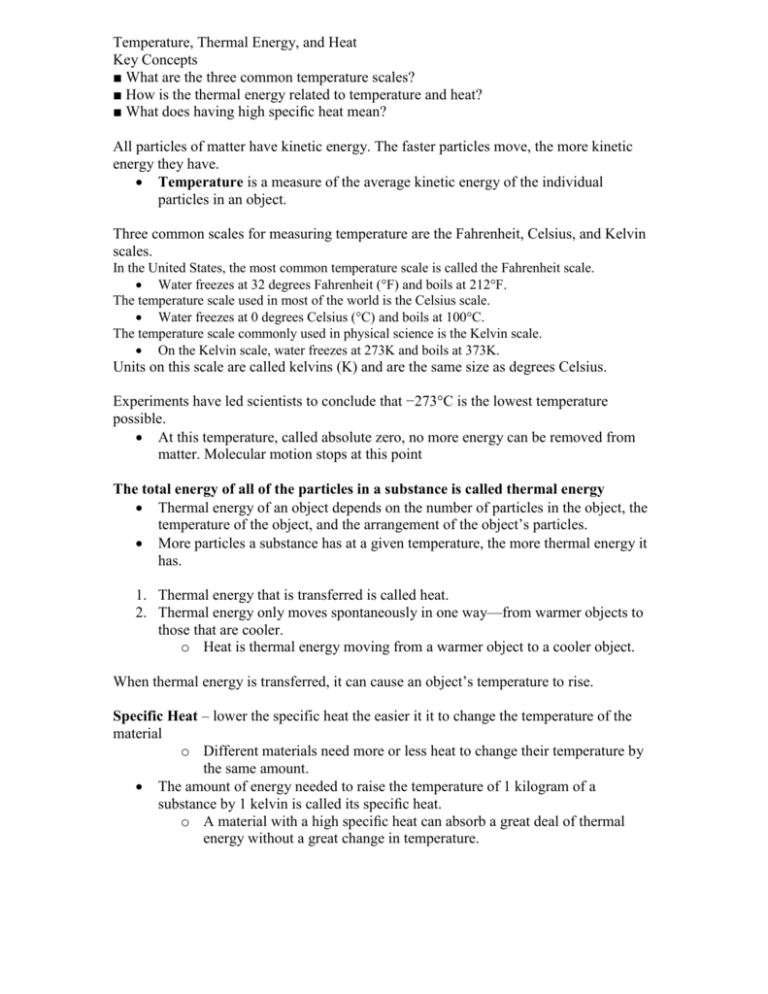
Temperature, Thermal Energy, and Heat Key Concepts ■ What are the three common temperature scales? ■ How is the thermal energy related to temperature and heat? ■ What does having high specific heat mean? All particles of matter have kinetic energy. The faster particles move, the more kinetic energy they have. Temperature is a measure of the average kinetic energy of the individual particles in an object. Three common scales for measuring temperature are the Fahrenheit, Celsius, and Kelvin scales. In the United States, the most common temperature scale is called the Fahrenheit scale. Water freezes at 32 degrees Fahrenheit (°F) and boils at 212°F. The temperature scale used in most of the world is the Celsius scale. Water freezes at 0 degrees Celsius (°C) and boils at 100°C. The temperature scale commonly used in physical science is the Kelvin scale. On the Kelvin scale, water freezes at 273K and boils at 373K. Units on this scale are called kelvins (K) and are the same size as degrees Celsius. Experiments have led scientists to conclude that −273°C is the lowest temperature possible. At this temperature, called absolute zero, no more energy can be removed from matter. Molecular motion stops at this point The total energy of all of the particles in a substance is called thermal energy Thermal energy of an object depends on the number of particles in the object, the temperature of the object, and the arrangement of the object’s particles. More particles a substance has at a given temperature, the more thermal energy it has. 1. Thermal energy that is transferred is called heat. 2. Thermal energy only moves spontaneously in one way—from warmer objects to those that are cooler. o Heat is thermal energy moving from a warmer object to a cooler object. When thermal energy is transferred, it can cause an object’s temperature to rise. Specific Heat – lower the specific heat the easier it it to change the temperature of the material o Different materials need more or less heat to change their temperature by the same amount. The amount of energy needed to raise the temperature of 1 kilogram of a substance by 1 kelvin is called its specific heat. o A material with a high specific heat can absorb a great deal of thermal energy without a great change in temperature.
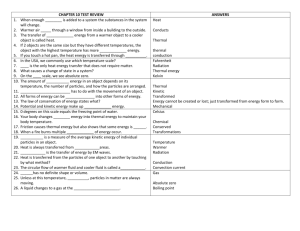


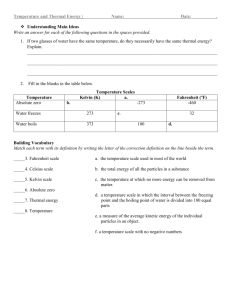
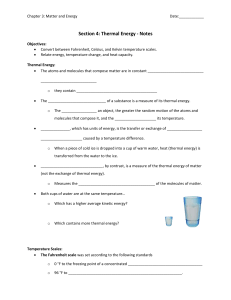
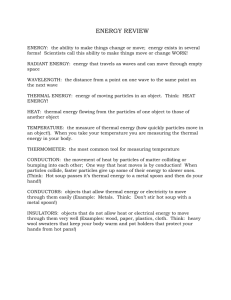

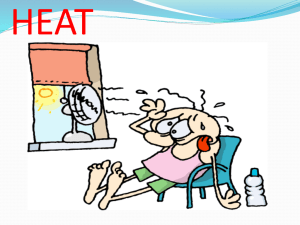
![Temperature Notes [9/22/2015]](http://s3.studylib.net/store/data/006907012_1-3fc2d93efdacd086a05519765259a482-300x300.png)

